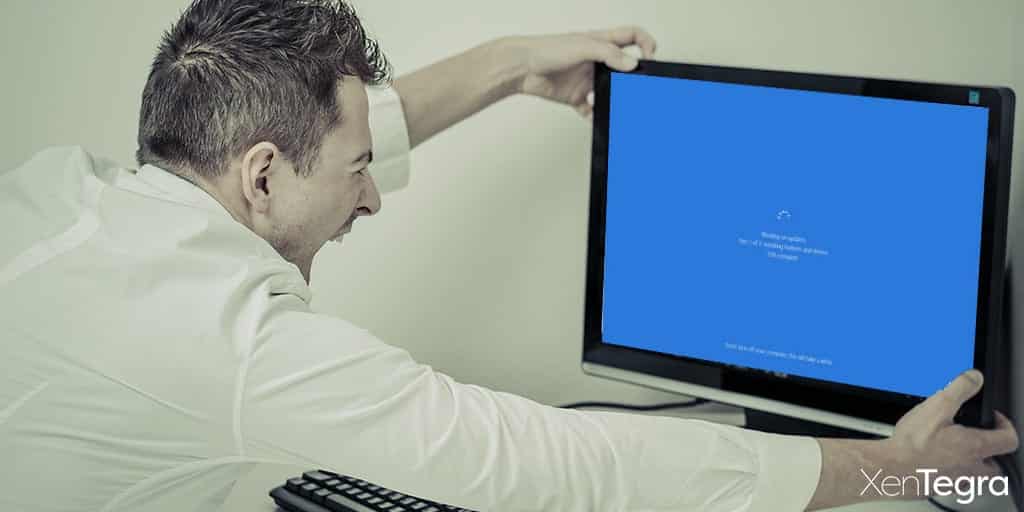


[et_pb_section fb_built=”1″ admin_label=”section” _builder_version=”3.22″][et_pb_row admin_label=”row” _builder_version=”4.4.8″ background_size=”initial” background_position=”top_left” background_repeat=”repeat” hover_enabled=”0″ width=”90%” max_width=”1170px”][et_pb_column type=”4_4″ _builder_version=”3.25″ custom_padding=”|||” custom_padding__hover=”|||”][et_pb_text admin_label=”Text” _builder_version=”3.27.4″ background_size=”initial” background_position=”top_left” background_repeat=”repeat”]Another fall is upon us, and with that, we are graced with another release of Windows 10 but not without a few bumps in the road. The Windows 10 October 2018 Update (version 1809) was slated to release on October 10th but got plagued with issues:
Whether a consumer or enterprise, I’d say, folks are pretty frustrated. If you read the Windows 10 release blog, Microsoft claims this will not be an issue in the future because they “have enabled a new feature in the Windows Insider Feedback Hub.” While there are ways to defer feature updates and avoid this issue until you are ready to feel like upgrading, as an enterprise, you need to start looking at how much these updates are costing you and if you want to continue to battle Windows 10 updates every 12-18 months?
With the Windows 7 ‘deadline’ [January 14, 2020] looming, upgrading to Windows 10 is becoming more urgent than ever where the enterprise needs to think, is Windows 10 the best path forward for all your devices? I challenge ALL enterprises to take a look at your ‘hard’ [direct] costs and your ‘soft’ [indirect] costs when looking at a Windows 10 upgrade, and refresh. According to Gartner, a PC can cost you an estimated TCO of between $10,000 (unmanaged) and $3500 (effectively managed) per year! What IT managers tend to forget, is ALL the costs associated with a PC; hardware and software costs, operational costs, administration costs, end-user costs, and downtime. Remember, ALL these play into the cost of a PC yearly!
Start looking across the enterprise and assess the following:
Again, think about it, why are you using a Windows device to connect to a Citrix, Cloud and/or SaaS environment?
In the enterprise world, there are three recurring themes when it comes to end-user computing (EUC); security, management, and experience. With internet access being more abundant now (I am typing this on a flight via my VDI desktop), the old excuse of offline use cases is becoming less and less prevalent especially with 5G coming.
IGEL is starting a revolution in the enterprise, making Linux mainstream and a feasible endpoint. IGEL is simple, smart and secure!
Want to see for yourself? Join IGEL and XenTegra on Wednesday, October 24th for Webinar Wednesdays and get an IGEL overview and demo![/et_pb_text][/et_pb_column][/et_pb_row][/et_pb_section]